
The practice of observing whales in their natural habitat is most often reserved for recreational purposes, but can also serve as great assistance to marine biologists and those conducting scientific study alike. A 2008 study showed that 13 million people took part in whale watching that year, generated approximately $2.1 billion in global tourist revenue, and employed around 13, 000 people. In this ever-expanding industry, the number of locations and those providing the opportunity to go whale watching has grown significantly. Regions such as the Atlantic, Pacific, Caribbean and even the Mediterranean offer the chance to see the gentle giants of the see roam about their natural surroundings. Perhaps the best part of such a journey is the fantastic intelligence and kindness of the species, making the expedition a much safer experience than a safari for example. Here, for your reference, are some of the best whale-watching destinations around the world:
Advertisement
10. Wailuku, Hawaii
Not only is heading out to the island of Hawaii an experience simply for the great weather and history but, between October and May every year humpback whales visit the warm, tropical waters of the region for the purposes of breeding. These whales are of particular note for their specialized vocalizations sometimes referred to as songs. Humpbacks are usually seen slapping the water with their tails as they interact, as well as making hops in and out of the water. Also in the area are harbor seals, turtles and dolphins but that’s not all. Different bird species can be seen including herons, albatrosses, frigate birds and more. Manta rays and several pieces of the aforementioned turtles make this whale-watching location more of a marine researcher’s dream. Some tours are able to offer guaranteed whale sightings between January and April which means an experience is sure to be had, making this an excellent vacation spot.
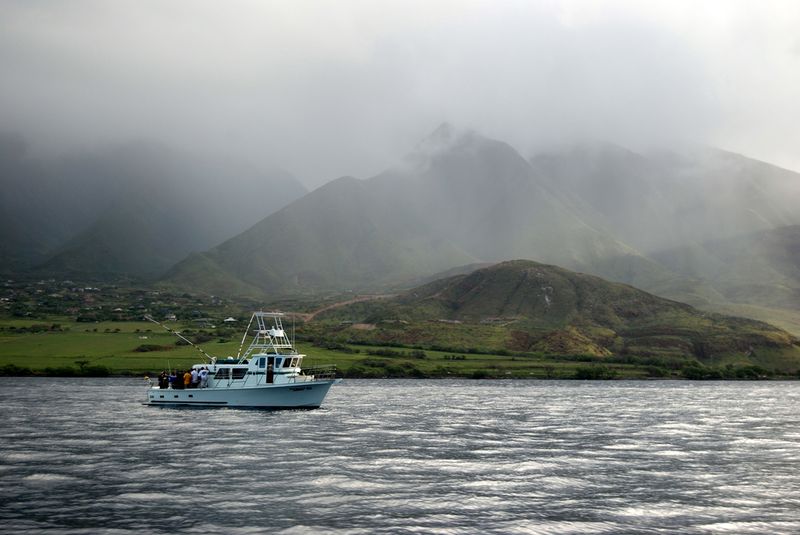
9. Baja, Mexico
Gray and orca (killer) whales are another great reason to visit Mexico. Just off the coast of Baja is where gray whales give birth to their young before making the unimaginable migration to Alaska in order to capitalize on the summer feeding. The story goes that these gray whales are particularly interested in interacting with humans and feeding their curiosity. Since the early 1970s the whales approached small fishing vessels in the San Ignacio Lagoon. These days the tour boats will carry occupants close enough to encounter the 30-ton beasts during their breeding season which lasts from December to April. Blue whales, finback and sperm whales can also be seen amongst an array of dolphin species. Pelicans and other birds nest in the same area, but as an added treat, tourists may catch a glimpse of California sea lions, too. Offers for turtle conservation trips in the area are available as well should any traveler desire.
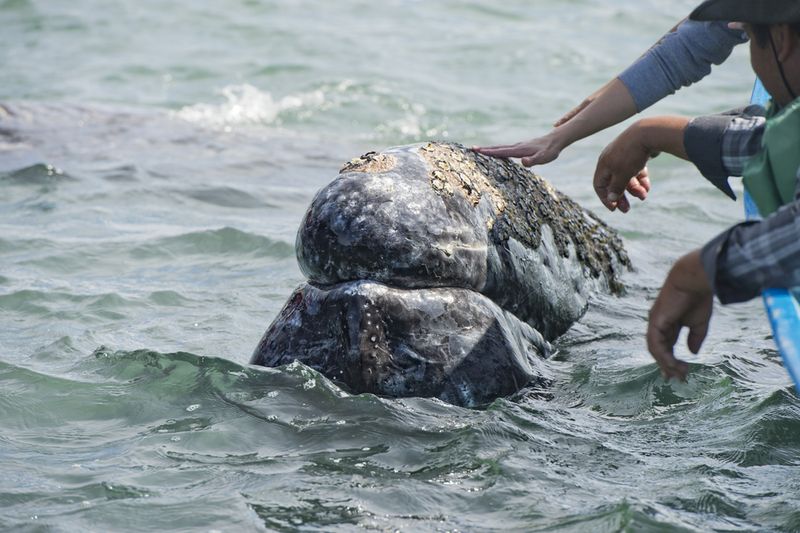
8. Reyjavik, Iceland
Some of the most beautiful species swim their way through the remote seas that surround the remote nation of Iceland. Some of these whale and wildlife watching excursions include minke whales, white-beaked dolphins and orca whales. The Icelandic whale-watching expeditions can also offer a different type of unique experience than any other trips taken elsewhere in the world. Included in some tours, a boat ride to puffin nesting colonies also allows for a showcase of the northern lights. The auroras are caused by particles entering the atmosphere resulting in optical emissions. Basically, breathtaking lights seemingly float off the edge of the globe. The auroras combined with the beauty of the mammals make this trip one that can potentially knock two items off even the most specific bucket lists. Enjoy the unique culture of Iceland that only few travelers know about.
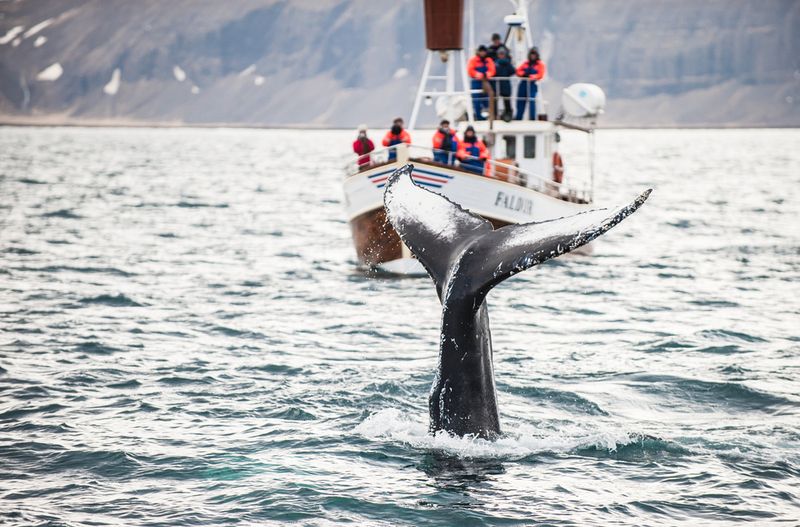
7. Island of Azores, Portugal
Way out in the Atlantic Ocean approaching the coasts of Portugal and Morocco lay many remote islands that make up the region known as the Azores. During the peak season (May to October) blue, finback and sperm whales call the mild climates of the island waters their home. Like many other whale-watching locations, an array of bird species is not far off. Egrets, kittiwakes, storm petrels and more flock to this region in the Azores making it an animal lover’s paradise. Some of the lesser-seen species may include pilot whales, killer whales and certain dolphin species skipping across the water. These porpoise species are the classic, gray and white combination that people have come to know and recognize. Put them in crystal clear Atlantic Ocean water and this is where images that may seem to be photo shopped come from. It should be noted that if time and money warrant it, trips between Iceland and Azores can be to taken to extend the experience.

Advertisement
6. Newfoundland and Labrador, Canada
Far away from major cities on the Northeast coast of Canada there are opportunities to see whales off the coast of some Atlantic provinces. Particularly in the north of Newfoundland & Labrador where the Gulf of St. Lawrence opens up to the Atlantic Ocean and offers the opportunity to meet many spectacular species. The history is rich where beluga, minke, humpback, fin, blue and sperm whales are located. As usual a plethora of seabirds will have heads looking up and out right after they were looking down at the backs of the sea beasts. Enjoy trips to many of the large parks in Newfoundland, Nova Scotia or New Brunswick before heading out onto the ocean. The east coast culture is great and the folks are friendly, but don’t expect special treatment. The water may be choppy; however these locations offer some of the best whale sightings in the entire world. Prepare for potentially frigid temperatures in the more northern locations depending on time of year.
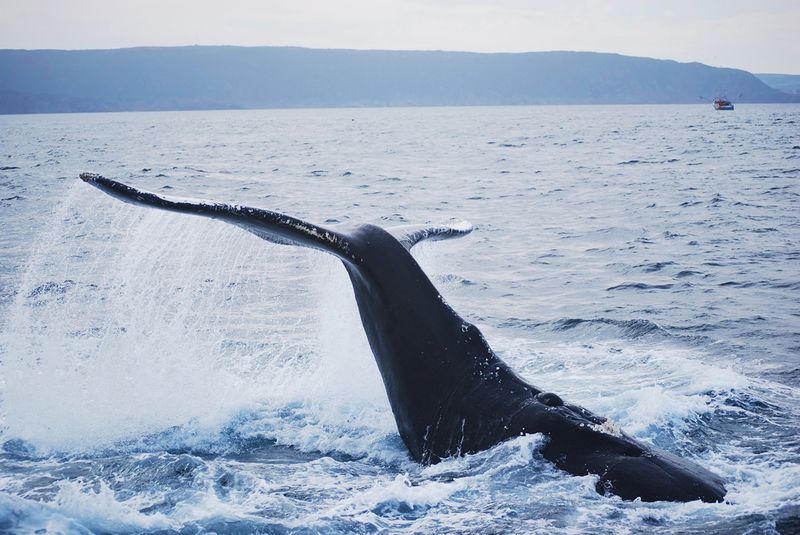
5. Georgia Straight, B.C., Canada
With such an enormous amount of coastline (the most anywhere), Canada is known as having some of the world’s best whale watching expeditions on the planet. The Atlantic has been covered, but the Pacific offers a great variety of species and not just whales. Along with the Strait of Juan de Fuca, Georgia Strait is home to populations of highly-social orca whales. Take boats from Victoria and Vancouver between May and October in order to see the whales and other animals that inhabit these waters. Also present are humpback whales, Pacific white-sided dolphins and of course sea lions. Unfortunately, the sea lions while adorable and cuddly to humans are the favorite tasty snack of the orca; which is what gives them the moniker of ‘killer whales’. While the sea lion pups are looking precious along the beach lines, the orcas use their sonar to swoop in for their meal. This is an astonishing opportunity to see the food chain in action.

4. New York/New Jersey, USA
When one thinks of New York, the last thing on their mind is likely to be whales. This is even more so when referring to New Jersey, which is more known for Atlantic City and the place where the mob operates their “construction company” out of. The reality is the waters off the coast of the great state see thousands of watchers waiting for a glimpse each and every year. From April to November (peak season is June through August) humpback, minke, fin, blue and sperm whales feed along the continental shelf. They can also be seen simply migrating through the area. Bottlenose dolphins and killer whales are in the area. Where orcas are of course, seals are as well, and we know why (thanks to the previous slide). The birds aren’t far away either; harlequin ducks and scoters are visible of the coast of New York City and New Jersey. The fact that there is so much accessible coastline here is what makes for an unforgettable whale-watching experience.
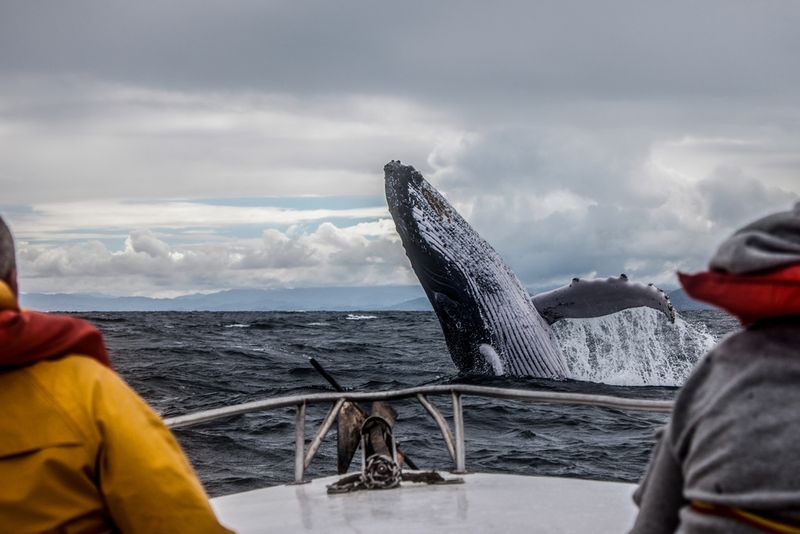
3. Newport Beach, California
Marine mammals and birds are available in large, diverse numbers here with many easy-to-access points available through tours. Blue, gray and humpback whales are seen due to migration patterns, while fin and minke whales can be seen almost all year round. Some dolphins and orcas are noted to be in the area, as well. Gray whales have a migration season from January to May, with a peak in March. Humpbacks are in a similar pattern, while fin and blue whales have their sightings peak in the summer. Offshore islands are where harbor seals, sea lions and sea otters call home, while gulls, pelicans and puffins nest in the same area. Some of the birds follow the same seasons as the humpbacks, as they travel to the arctic in the summer and return south in the winter. No matter if early in the year or during the heat of August, California provides a plethora of whale-watching opportunities.
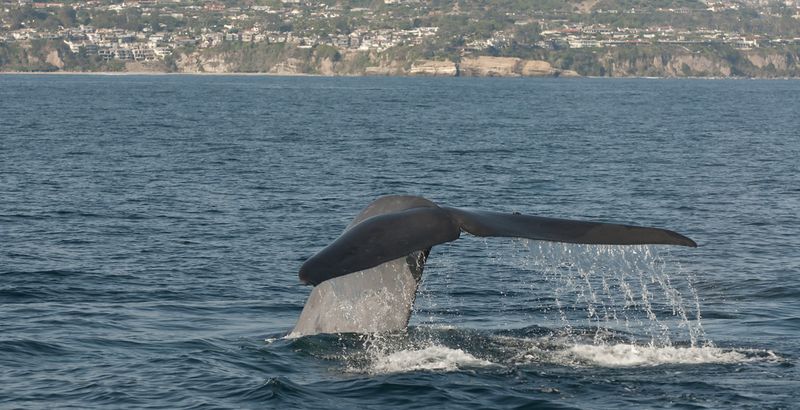
2. Seattle, Washington
Take a day-long trip for a whale-watching tour from Seattle to navigate all the surrounding islands including the stunning Deception pass and the San Juan Islands. Along with Bellingham, there are many places to learn about the wildlife, marine life and the ecosystem in its entirety. Orcas are spotted hunting harbor seals and porpoises, adding to the unfortunate list of creatures orcas set their eyes on when it comes to dinner time. Minke and humpback whales are the competition, as different breeds of sea lions hunt salmon in the late spring and early autumn months. The circle keeps going when bald eagles or ospreys dive down from the sky to pick off unsuspecting fish while great blue herons stand idly by on the shore line to haul their catch in a different manner. The variety of species in this area is simply outstanding and is sure to please wildlife lovers of all kinds.
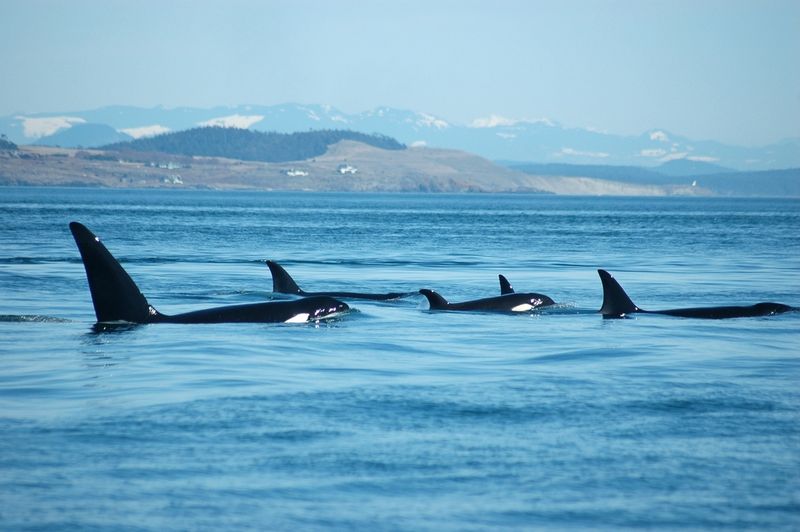
Advertisement
1. Juneau, Alaska
Our number one pick due to the amazing scenery, southeastern Alaska is said to provide life-long memories from the wildlife encounters during whale-watching trips. Migratory humpback whales spend the summer feeding in these waters, and set up something spectacular that is seen on many nature programs. Humpbacks create an underwater cyclone or “net” of bubbles around schools of fish and then lunge to the surface in a display of their natural power. Minke whales also use this technique. Gray whales are seen on their migration patterns, while orcas patrol the coast year-round looking for their prey. Steep-sided fjords and open waters are open to explore, while porpoises, seals, otters and sea lions play chicken with the aforementioned killer whales. The largest population of bald eagles in the world can be found here due to the abundance of salmon. From Juneau to Homer, the possibilities (and photo opportunities are endless) making Alaska #1 on the list.
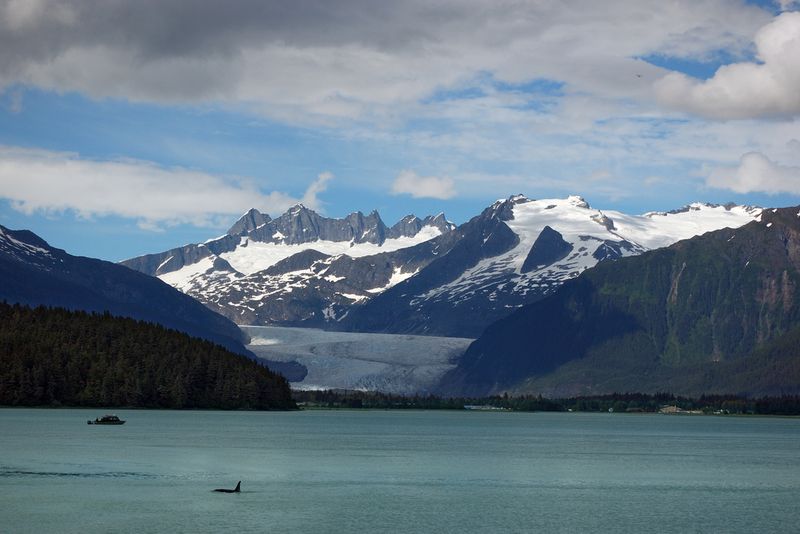
Advertisement